Patient Charges for PBS Prescriptions: Example Calculations
Page last updated: 1 January 2025
The Pharmaceutical Benefits Scheme (PBS) co‑payment amounts and fees used in these examples are based on the fees and mark-ups from 1 January 2025. These amounts and fees are normally indexed annually. Both PBS patient co-payment amounts will not be indexed in 2025. In the examples, the general patient co‑payment amount is $31.60 and the concessional co‑payment amount is $7.70. Please note that the drug names in the example calculations are fictitious.
Example 1.1 - Under co-payment prescription with brand premium – general patient
Setting: approved PBS community pharmacy
Prescription for famicin 100mg – 30 tablets
Dispensed Price for Maximum Quantity (DPMQ) for brand supplied = $32.60
DPMQ for base price brand = $27.40
Therefore, brand premium = $5.20
DPMQ for base price brand ($27.40) ≤ general patient co‑payment amount ($31.60)
DPMQ for base price brand ≤ general patient co‑payment amount
- prescription is under the general patient co‑payment amount
Formula for maximum total patient charge:
Step A. DPMQ (for base price) + Safety Net recording fee + Additional Patient Charge (capped at the amount of the general patient co‑payment amount if sum is greater)
Step B. Add brand premium (if any)
Stepwise calculation
Step A.
- DPMQ $27.40 + Safety Net recording fee of $1.45 = $28.85 Subtotal is less than the general co‑payment amount of $31.60, therefore no capping required.
- $28.85 + additional patient charge of $3.45 = $32.30
Sum of components is greater than the maximum general patient co-payment amount.
Charge is capped at general patient co‑payment amount of $31.60.
The Additional Patient Charge component is limited to $2.75 ($31.60 - $28.85).
Step B.
-
$31.60 + $5.20 brand premium
Maximum total patient charge = $36.80
For a PBS supply in this example, the pharmacist may charge any amount up to $36.80. If the amount charged is more than $36.80, the prescription is considered a non-PBS prescription (the supply would be considered a private prescription and none of the amount paid would count towards the patient’s PBS Safety Net).
Formula for amount to Safety Net
DPMQ + Safety Net recording fee (capped at the maximum general patient co‑payment amount or capped at the amount charged if less than the co-payment amount)
Stepwise application
-
$27.40 + Safety Net recording fee of $1.45 = $28.85 (no capping required)
If amount charged is ≥ $28.85 and ≤ $36.80; the amount towards the Safety Net = $28.85
If amount charged is less than $28.85; the amount towards the Safety Net = amount charged.
If the amount charged is greater than $36.80; the prescription is non-PBS and the amount that counts towards the Safety Net is nil
The Additional Patient Charge (up to $3.45) component does not count towards the Safety
Net.
The brand premium does not count towards the Safety Net.
Example 1.2 - Under co-payment prescription – general patient
Setting: approved PBS community pharmacy
Prescription for ramaten 25mg – 28 capsules
DPMQ for brand supplied = $17.86
DPMQ for base price brand = $17.86
- prescription is under the general co‑payment amount with no brand premium.
Formula for maximum total patient charge:
Step A. DPMQ + Safety Net recording fee + Additional Patient Charge (capped at the amount of the general patient co‑payment amount if sum is greater)
Step B. Add brand premium (if any)
Stepwise calculation
Step A.
- DPMQ $17.86 + Safety Net recording fee of $1.45 = $19.31
- Subtotal is less than the maximum general co‑payment amount of $31.60 - no capping required.
- $19.31 + additional patient charge $3.45 = $22.76 (no amounts reduced by capping).
The pharmacist can charge any amount up to $22.76.
Step B.
- Not required as no brand premium.
Formula for amount to Safety Net
If amount charged is ≥ $19.31 and ≤ $22.76; amount to Safety Net = $19.31.
If amount charged is less than $19.31; amount to Safety Net = amount charged.
If the amount charged is greater than $22.76; the prescription is non-PBS and the
amount that counts towards the Safety Net is nil.
Example 2.1 - Over co-payment prescription with brand premium – general patient
Setting: approved PBS community pharmacy
Prescription for natamicin 500mg – 100 tablets
DPMQ for brand supplied = $57.00
DPMQ for base price brand = $53.60
Therefore, brand premium = $3.40
DPMQ for base price brand ($53.60) > maximum general patient co‑payment amount ($31.60)
- prescription is over the general co‑payment amount
For a prescription with a DPMQ above the co‑payment amount, the pharmacist may elect to discount the general patient co‑payment amount by up to $0.10.
Formula for maximum total patient charge:
Step A. general patient co‑payment amount (with or without a discount up to $0.10)
Step B. add price premium (if any)
Stepwise application
Step A.
- The maximum general co‑payment amount of $31.60 (minus up to $0.10)
Step B.
- $31.60 + $3.40 = $35.00 (minus up to $0.10)
The pharmacist can charge any amount from $34.90 to $35.00 – but not less than $34.90 and not more than $35.00. Any other charge means the prescription is non‑PBS (the supply would be considered a private prescription and none of the amount paid would count towards the patient’s PBS Safety Net).
Formula for amount to Safety Net
If amount charged is an amount from $34.90 to $35.00, the amount to Safety Net = $31.60.
If the amount charged is less than $34.90 or more than $35.00, the prescription is non-PBS and the amount to be recorded against the patient’s Safety Net is Nil.




